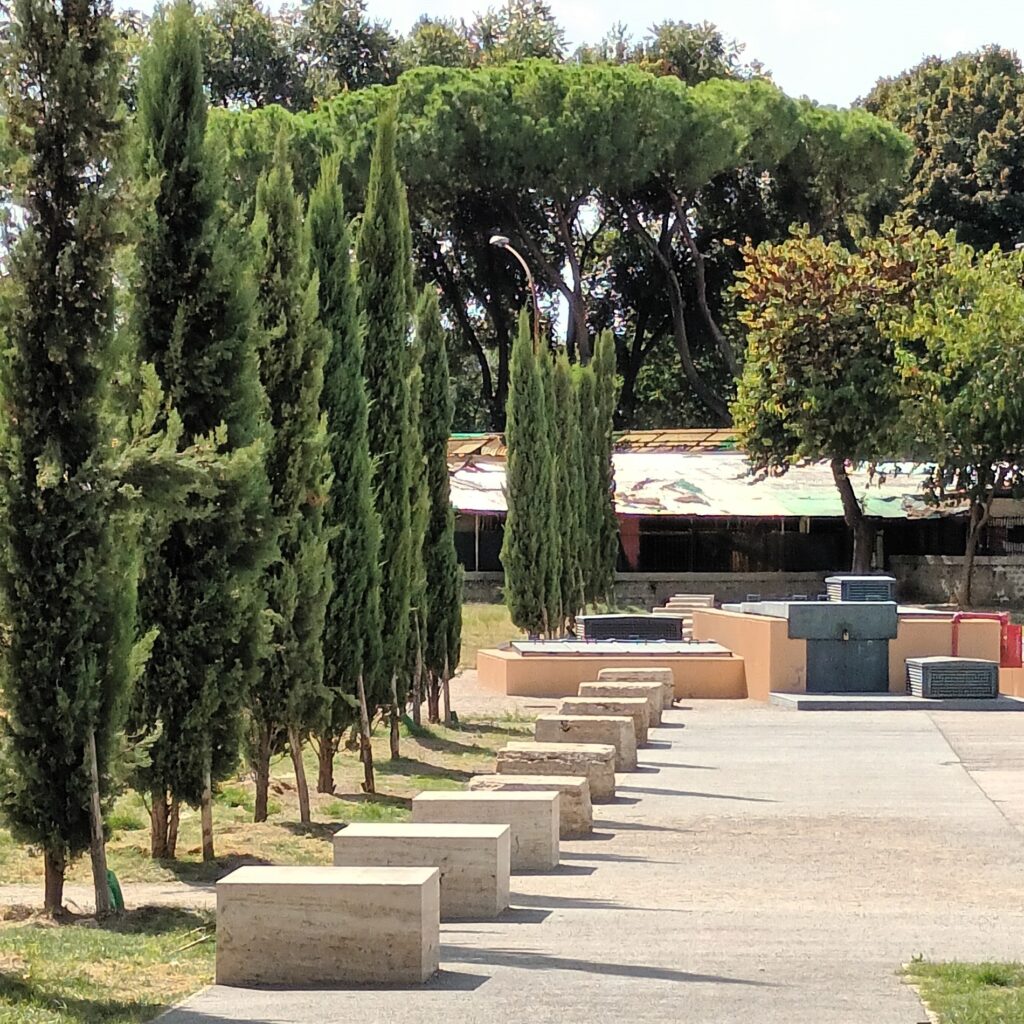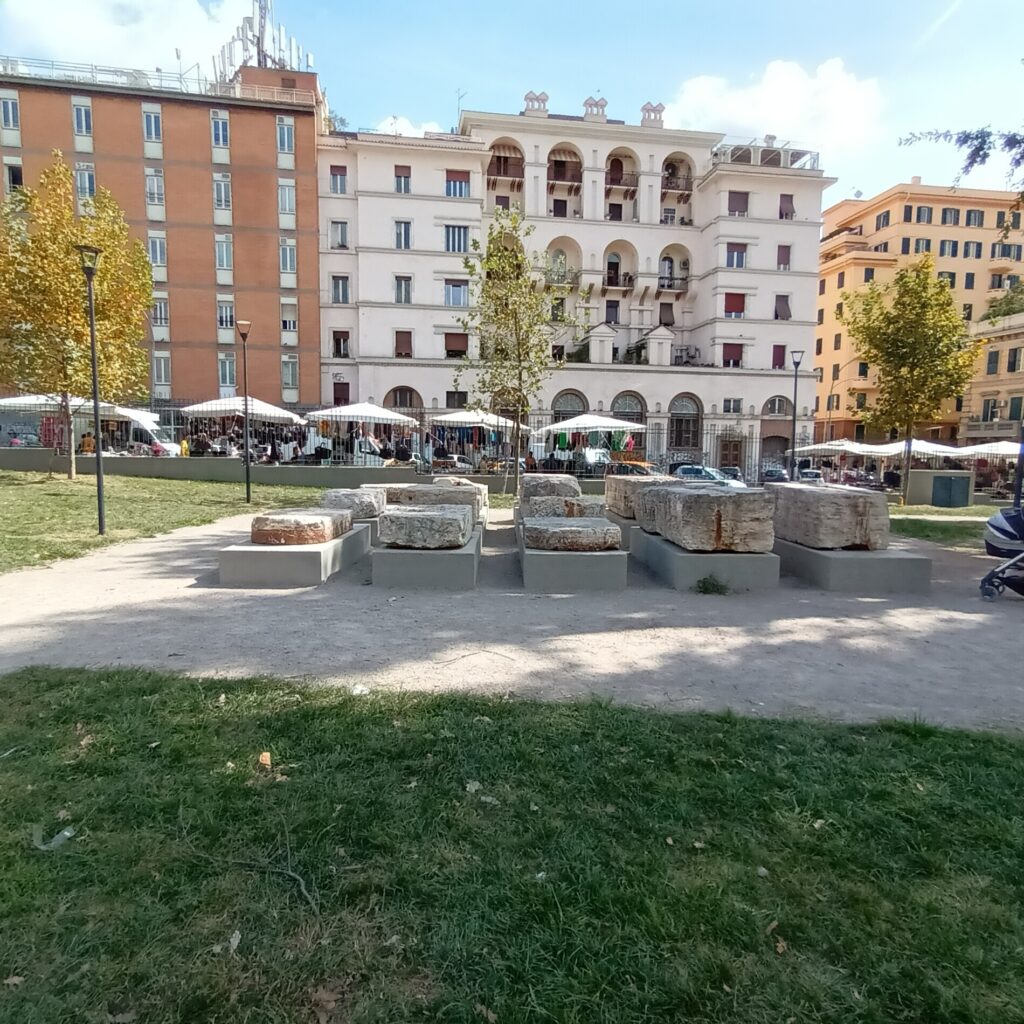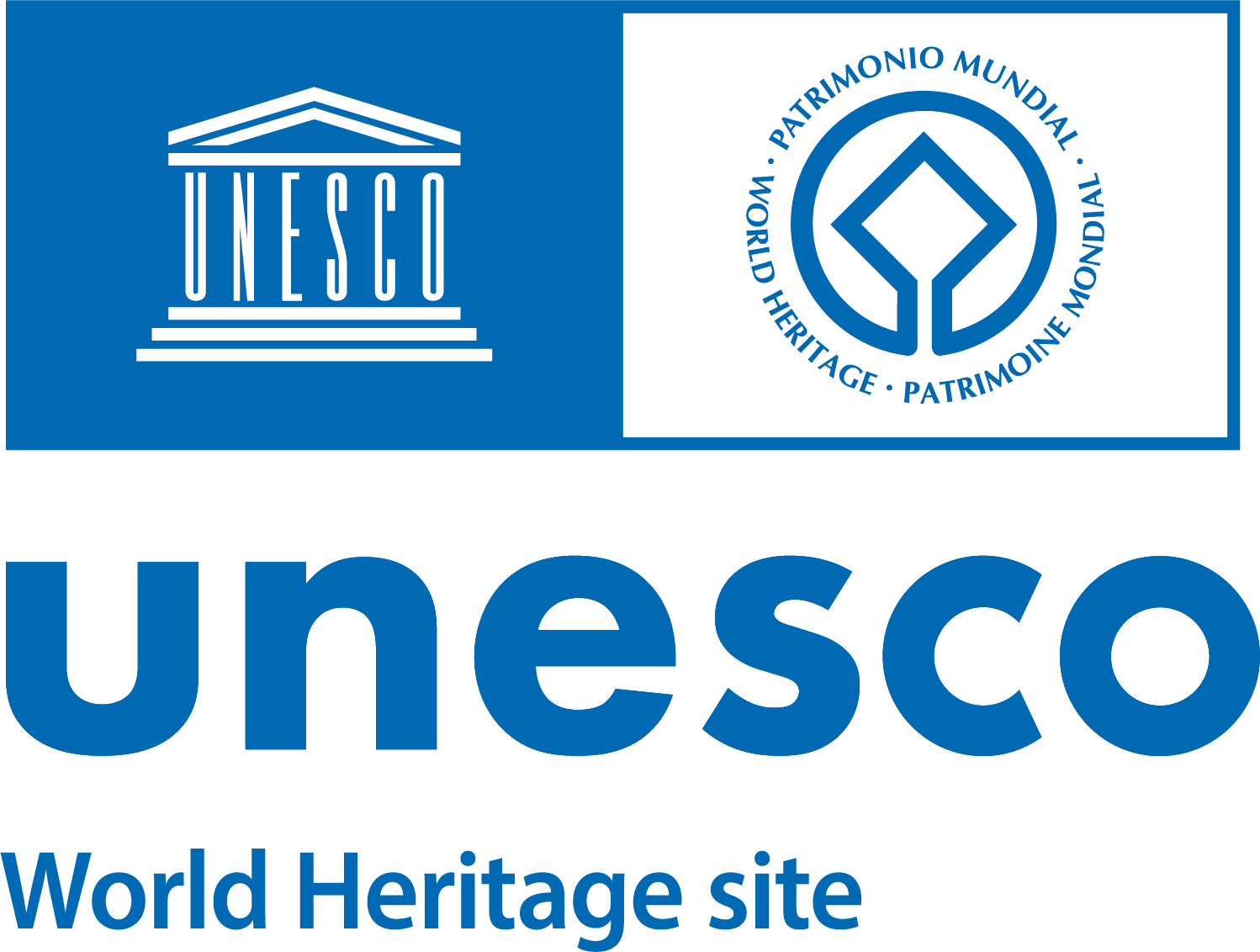Along Via Sannio, in 2020, the eponymous gardens were restored in an area long used for the Metro C construction site. Excavations uncovered an imposing portico built under Emperor Claudius around the mid-1st century CE, abandoned and buried by 80 CE. The colonnade opened onto a gently sloping garden leading to a watercourse. The structure likely belonged to a wealthy residence arranged on terraced levels. Column bases in travertine blocks and the back wall, behind which a channel collected rainwater from the Lateran Hill, were preserved. The footprint of the ancient portico is suggested in the gardens by travertine blocks and cypress trees.
A platform of bases supports stone blocks and slabs recovered from the Aurelian Walls, originating from the marble workshop founded in 1885 just outside Porta S. Giovanni by Emidio Costa. The New Roman Industrial Establishment carried out turning and sawing works for the city, including restoration of the basilicas of San Paolo fuori le Mura and San Giovanni in Laterano. The fill that gradually reached the top of the inner Aurelian Walls from the 16th century transformed this section into a simple retaining wall. To counter soil pressure, eight buttresses were added, two larger ones at the towers, possibly already partially collapsed. Twenty-three openings for water drainage were created in the masonry using travertine slabs. These 18th-century works are still visible along the gardens.


2. The Costa Marbles (photo: Cerrito)


